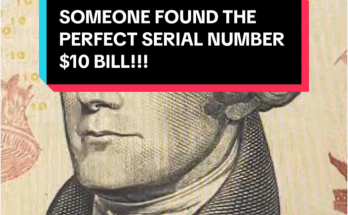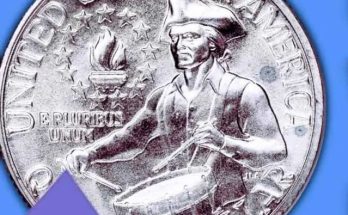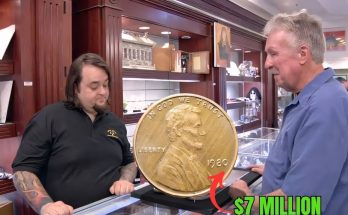That humble Lincoln Cent sitting in your coin jar might be worth far more than its face value! While millions of pennies circulate daily, a select few are highly sought-after by numismatists (coin collectors) for their rarity, historical significance, and especially, minting errors. Our guide to the Top 11 Most Valuable Pennies in Circulation will help you uncover if you own a small piece of history—and a potentially life-changing treasure!
The Most Valuable Pennies to Hunt For
The most valuable pennies are usually Wheat Pennies (1909–1958) or early Lincoln Memorial Cents (1959–present) with rare characteristics. These coins often gain value due to low mintage, key dates, or spectacular mint errors.
1. The 1943 Bronze (Copper) Cent: The War-Time Error
-
Why it’s rare: In 1943, the U.S. Mint switched to zinc-coated steel planchets to conserve copper for World War II efforts. A few leftover bronze planchets from 1942 were accidentally struck with the 1943 dies.
-
Value: An estimated two dozen exist. An example sold for over $1.7 million.
-
How to check: A genuine 1943 copper penny will be non-magnetic, unlike its steel counterpart.
2. The 1944 Steel Cent: The Opposite Error
-
Why it’s rare: In 1944, the Mint returned to a modified copper alloy, but a few leftover steel planchets from 1943 were mistakenly used.
-
Value: These are extremely rare transitional errors, with values ranging from $10,000 to over $400,000 depending on the mintmark and condition.
-
How to check: A 1944 steel cent will be magnetic.
3. The 1909-S VDB Lincoln Cent: A Designer’s Mark
-
Why it’s rare: This coin was the first Lincoln Cent and included the designer’s initials, VDB (Victor David Brenner), on the reverse. Public outcry led to the rapid removal of the initials. The ‘S’ mintmark (San Francisco) denotes a very low mintage.
-
Value: Highly sought-after, a high-grade example can fetch over $100,000.
4. The 1955 Doubled Die Obverse (DDO) Cent
-
Why it’s rare: A misalignment of the coin dies caused a clear, unmistakable doubling of the date (1955) and the inscriptions LIBERTY and IN GOD WE TRUST.
-
Value: One of the most famous and recognizable errors, high-grade examples can sell for over $1,000 to tens of thousands of dollars.
5. The 1969-S Doubled Die Obverse Cent
-
Why it’s rare: Similar to the 1955 DDO, this San Francisco-minted coin exhibits dramatic doubling on the obverse. Many fakes exist, making authenticated specimens incredibly valuable.
-
Value: Authenticated examples have sold for over $126,000.
6. The 1922 “Plain” (No D) Cent: The Missing Mintmark
-
Why it’s rare: Only the Denver Mint (D mintmark) struck cents in 1922. Heavy polishing of the die to remove damage resulted in the complete obliteration of the ‘D’ mintmark on a batch of coins.
-
Value: A true 1922 “No D” cent can be worth upwards of $12,000 to $60,000 or more.
-
How to check: The absence of the mintmark must be due to the die error, not just wear, which typically results in a weaker strike on the reverse.
7. The 1914-D Lincoln Cent: Key Date Rarity
-
Why it’s rare: A surprisingly low mintage from the Denver Mint makes this a key date rarity.
-
Value: Circulated coins start at a few hundred dollars, but uncirculated specimens can exceed $40,000.
8. The 1972 Doubled Die Obverse Cent
-
Why it’s rare: A very noticeable doubled die error on the date and inscriptions, easier to spot than many other DDOs.
-
Value: High-grade examples can sell for over $14,400.
9. The 1982-D Small Date Copper Cent: A Modern Transitional Error
-
Why it’s rare: In 1982, the Mint changed the composition from copper to cheaper zinc-clad steel and introduced a slightly smaller date design. The ultra-rare Denver-minted (D) small date coin accidentally struck on a leftover copper planchet (3.11 grams) is one of the rarest modern cents.
-
Value: Only a few are known. Examples have sold for over $10,000 to $25,000+.
-
How to check: You must check for the D mintmark, the small date design, and the heavier 3.11 gram weight.
10. The 1958 Doubled Die Obverse Cent
-
Why it’s rare: Like other DDOs, this coin features strong doubling on the lettering, particularly LIBERTY and IN GOD WE TRUST. Only three are known to exist.
-
Value: Due to extreme rarity, its value is estimated to be over $200,000.
11. The 1992 Close AM Cent
-
Why it’s rare: A rare die variety where the letters A and M in AMERICA on the reverse are struck closer together than the standard wide-gap variety for that year.
-
Value: Examples have sold for over $25,850.
🧐 Tips for the Penny Hunter
-
Look for Errors, Not Just Dates: While key dates (like 1909-S or 1914-D) are important, the most valuable pennies are often error coins like doubled dies, off-metal strikes (1943 Copper, 1944 Steel), or missing design elements.
-
Check for the “Small Date” on 1982 Cents: The 1982-D small date copper variety is a major find. Look for the ‘8’ having a smaller top loop and the ‘2’ having a curved diagonal line. Always weigh the coin to confirm the copper (3.11g) composition.
-
Condition Matters: A coin’s value can skyrocket if it’s in uncirculated, or “Mint State,” condition (MS-65+). Even a rare coin found in circulation will be worth less than one preserved in mint condition.
Happy hunting! Even if you don’t find a six-figure treasure, every penny tells a story of U.S. history and coin production.
Check out this video to see some of the Top 50 Most Valuable Pennies In History that could still be out there. This video is relevant because it provides visual examples and further context on many of the rare pennies mentioned in the top 11 list.



